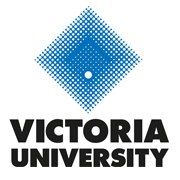Brief description
Gene expression analysis by quantitative PCR in skeletal muscle is routine in exercise studies. The reproducibility and reliability of the data fundamentally depend on how the experiments are performed and interpreted. Despite the popularity of the assay, there is a considerable variation in experimental protocols and data analyses from different laboratories, and there is a lack of consistency of proper quality control steps throughout the assay. In this study, we present a number of experiments on various steps of quantitative PCR workflow, and demonstrate how to perform a quantitative PCR experiment with human skeletal muscle samples in an exercise study. We also tested some common mistakes in performing qPCR. Interestingly, we found that mishandling of muscle for a short time span (10 mins) before RNA extraction did not affect RNA quality, and isolated total RNA was preserved for up to one week at room temperature. Demonstrated by our data, use of unstable reference genes lead to substantial differences in the final results. Alternatively, cDNA content can be used for data normalisation; however, complete removal of RNA from cDNA samples is essential for obtaining accurate cDNA content.
Created: 10 05 2018
User Contributed Tags
assay cDNA content data exercise research experiment gene expression analysis PCR quality control steps RNA sampleLogin to tag this record with meaningful keywords to make it easier to discover
- DOI : https://doi.org/10.1371/journal.pone.0196438

- DOI : https://doi.org/10.1371/journal.pone.0196438.s001

- DOI : https://doi.org/10.1371/journal.pone.0196438.s002

- DOI : https://doi.org/10.1371/journal.pone.0196438.s003

- DOI : https://doi.org/10.1371/journal.pone.0196438.s004

- DOI : https://doi.org/10.1371/journal.pone.0196438.s005

- DOI : https://doi.org/10.1371/journal.pone.0196438.s006

- DOI : https://doi.org/10.1371/journal.pone.0196438.s007

- DOI : https://doi.org/10.1371/journal.pone.0196438.s008

- DOI : https://doi.org/10.1371/journal.pone.0196438.s009

- DOI : https://doi.org/10.1371/journal.pone.0196438.s010

- PURL : https://figshare.com/collections/An_overview_of_technical_considerations_when_using_quantitative_real-time_PCR_analysis_of_gene_expression_in_human_exercise_research/4096484



